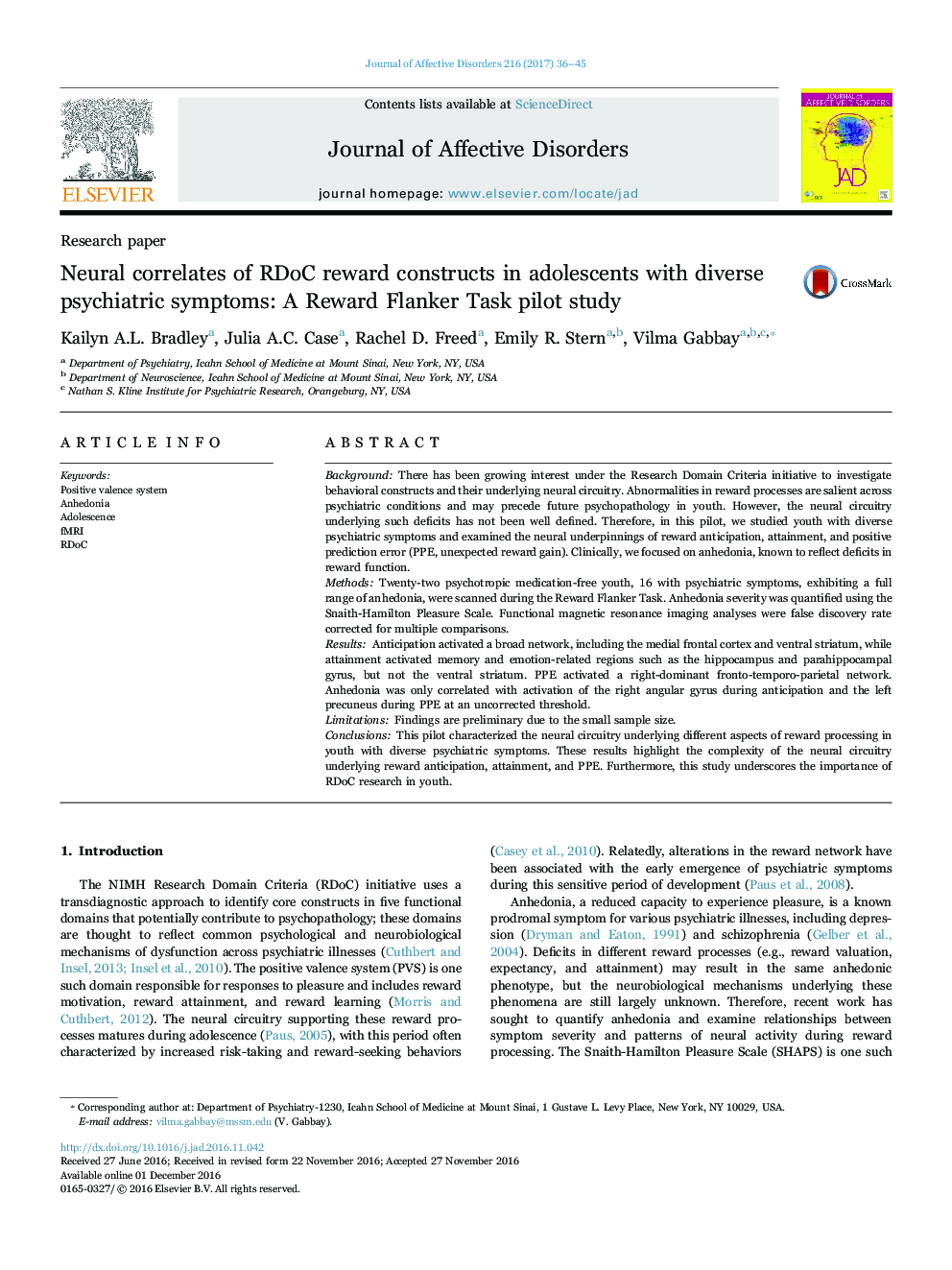| Article ID | Journal | Published Year | Pages | File Type |
|---|---|---|---|---|
| 5722305 | Journal of Affective Disorders | 2017 | 10 Pages |
â¢Reward anticipation activates medial prefrontal and ventral striatal regions.â¢Reward attainment activates memory and emotion-related regions.â¢Anhedonia is modestly correlated with neural activation during reward processing.
BackgroundThere has been growing interest under the Research Domain Criteria initiative to investigate behavioral constructs and their underlying neural circuitry. Abnormalities in reward processes are salient across psychiatric conditions and may precede future psychopathology in youth. However, the neural circuitry underlying such deficits has not been well defined. Therefore, in this pilot, we studied youth with diverse psychiatric symptoms and examined the neural underpinnings of reward anticipation, attainment, and positive prediction error (PPE, unexpected reward gain). Clinically, we focused on anhedonia, known to reflect deficits in reward function.MethodsTwenty-two psychotropic medication-free youth, 16 with psychiatric symptoms, exhibiting a full range of anhedonia, were scanned during the Reward Flanker Task. Anhedonia severity was quantified using the Snaith-Hamilton Pleasure Scale. Functional magnetic resonance imaging analyses were false discovery rate corrected for multiple comparisons.ResultsAnticipation activated a broad network, including the medial frontal cortex and ventral striatum, while attainment activated memory and emotion-related regions such as the hippocampus and parahippocampal gyrus, but not the ventral striatum. PPE activated a right-dominant fronto-temporo-parietal network. Anhedonia was only correlated with activation of the right angular gyrus during anticipation and the left precuneus during PPE at an uncorrected threshold.LimitationsFindings are preliminary due to the small sample size.ConclusionsThis pilot characterized the neural circuitry underlying different aspects of reward processing in youth with diverse psychiatric symptoms. These results highlight the complexity of the neural circuitry underlying reward anticipation, attainment, and PPE. Furthermore, this study underscores the importance of RDoC research in youth.
